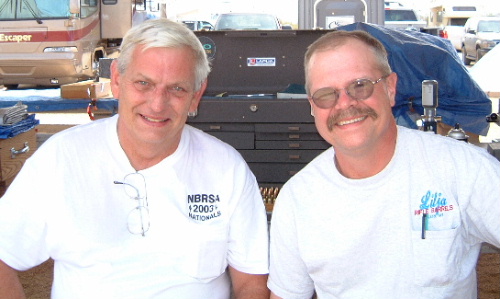Centerfire Maintenance
We recommend that your new Lilja rifle barrel be properly broken-in to obtain the best accuracy. A proper break-in will help ensure that your barrel will clean easily in the future and that you will achieve maximum accuracy potential. Please follow these important instructions.
We are concerned with two types of fouling: copper fouling, which is caused by bullet jacket material being left in the barrel, and powder fouling. During the first few rounds a lot of copper fouling will be left in the barrel. It is important to remove this fouling completely, after each shot, to help prevent a build-up later on. Powder fouling is ongoing, but easy to remove. Do not use moly-coated bullets during the break-in procedure.
Break-in Procedure
For an effective break-in the barrel should be cleaned after every shot for the first 10-12 rounds or until copper fouling stops. Our procedure is to push a cotton patch that is wet with solvent through the barrel. This will remove much of the powder fouling and wet the inside of the barrel with solvent. Next, wet a bronze brush (not a nylon brush) with solvent and stroke the barrel 5-10 times. Follow this by another wet patch and then one dry patch. Now soak the barrel with a strong copper removing solvent until all of the blue mess is removed from the barrel. The copper fouling will be heavy for a few rounds and then taper off quickly in just one or two shots. Once it has stopped or diminished significantly it is time to start shooting 5 shot groups, cleaning after each one. After 25-30 rounds clean at a normal interval of 10-25 rounds. Your barrel is now broken-in.
Normal cleaning
For a normal cleaning (after a string of 10-25 shots) after break-in, the above procedure should be used, but stop short of soaking the barrel with the strong copper remover. A good rule of thumb is to stroke the barrel with a brush, one cycle for every shot fired.
Do use a bronze brush. Some shooters and gunsmiths have the mistaken idea that a bronze brush will harm a barrel. It will not cause any damage to a barrel and the use of a bronze brush is necessary to remove all fouling. Substituting a nylon brush will not remove fouling as effectively as a bronze brush.
Periodic cleaning
It is probably a good idea to use a strong copper removing solvent every 200 rounds, or so, to check the barrel for copper fouling. We do not recommend the routine use of abrasive cleaners for normal cleaning. However they can be used every 500-1000 rounds to remove the carbon build-up (caused by powder fouling) in the throat area of the barrel. To use, wrap a cotton patch around a worn out brush or a cleaning jag and liberally apply the abrasive cleaner to the patch. Short stroke the abrasive for 6″ or so in the throat area and one or two full length passes through the barrel. Do not clean the barrel like this for more than 1-2 minutes.
Suggested equipment and solvents
It is important to use an action rod guide when cleaning. The guide aligns the rod with the bore and helps prevent uneven wear in the throat area. Be careful not to raise the handle end of the rod while stroking. This will put a “belly” in the rod that will wear the barrel. We suggest that plastic coated rods, like the Dewey and Parker-Hale, be used.
Our preferred cleaning solvent is Butch’s Bore Shine. This solvent is excellent at attacking both powder and copper fouling. We recommend it for both break-in and regular cleaning.
For occasional use only, abrasives like J-B paste, Flitz, or RemClean can be used.
Do not use a stainless steel brush in your barrel under any circumstances.
Do use a bronze brush with Butch’s Bore Shine or similar solvents. A nylon brush can be used in place of patches but should never be substituted for a bronze brush. Some shooters mistakenly believe that a bronze brush will harm a barrel; it will not.
Do not apply a strong copper remover, like Sweets, on a bronze brush. It will ruin the brush and give the false indication that the barrel has copper in it. This is a good time to use a nylon brush.
For shooters wishing to use moly-coated bullets we do not recommend shooting more than 25 rounds or so without using the normal cleaning procedure outlined above.
To also read Dan’s article titled Barrel Fouling – Click Here


